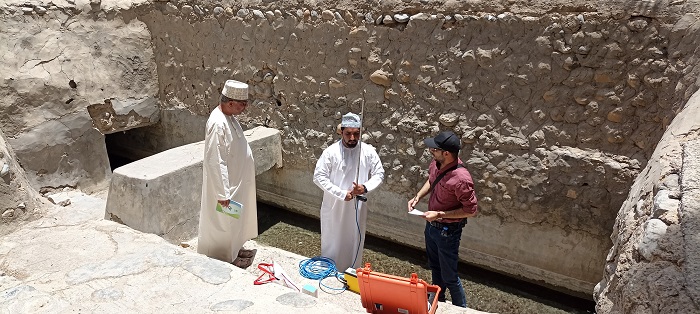
MUSCAT: Oman’s traditional aflaj systems — centuries-old channels that once shaped where and how communities lived — are facing mounting threats that could undermine their role as cornerstones of Omani society.
A new research study warns that rapid urbanisation, environmental degradation, and changing social dynamics now endanger more than water access: They put at risk a long-standing model of cooperation, resilience, and balance.
“This isn’t just about infrastructure or heritage,” says Dr. Majid Labbaf Khaneiki, principal investigator of the study and UNESCO Chair on Aflaj Studies and Archaeo-Hydrology at the University of Nizwa.
“The aflaj are a living system that have sustained communities not only through water, but through social collaboration and shared responsibility.”
The study, “Aflaj Systems and Social Cohesion in Oman, Dakhiliyah Region”, funded by the Ministry of Higher Education, Research and Innovation under its Block Funding Programme, positions the aflaj as much more than functional irrigation tools.
It finds that these systems have long served as organising structures for intertribal cooperation, economic interdependence, and conflict resolution — contributing to Oman’s unique socio-environmental equilibrium.
In challenging earlier anthropological portrayals of tribal societies as territorially insular, the researchers introduce the concept of “hydro-tribalism” — a framework that explains how shared water management, rather than fixed land boundaries, has shaped tribal interaction in Oman.
The falaj, they argue, functions as a unifying force, compelling cooperation due to the technical and geographic realities of water flow.
“Falaj systems cross tribal lines by necessity,” explains Dr. Labbaf Khaneiki.
“To maintain and benefit from a shared water source, tribes had to develop mechanisms of negotiation, joint investment, and trust. That’s where the real power of the aflaj lies — it made collaboration essential.”
The study’s methodology combined ethnographic fieldwork in northern Oman, in-depth interviews with local falaj stakeholders, and a comprehensive literature review from archival and online sources.
It reveals how falaj-based cooperation facilitated not only social cohesion but also supported a broader hydro-economic network —with communities investing collectively in farming systems, coordinating planting schedules, and sustaining commerce through waqf-funded infrastructure.
These networks, the study suggests, have been instrumental in maintaining social balance and economic sustainability in often harsh environmental conditions. However, that equilibrium is increasingly fragile.
“With urban development encroaching on falaj zones and climate variability reducing water flow, the entire system is at risk of breakdown,” Dr. Labbaf Khaneiki warns.
“We’re not just talking about losing an irrigation method — we’re talking about the erosion of centuries of social architecture.”
The report calls for urgent action, including legal protection for falaj routes, educational efforts to revive traditional knowledge among younger generations, and integrated planning policies that recognise aflaj as both environmental and cultural assets. The researchers stress that the value of the system lies not only in its technical ingenuity, but in the social intelligence it embodies.
“Falaj governance is rooted in equity and consensus. It’s a model of sustainability that deserves more than admiration — it demands protection,” says Dr. Labbaf Khaneiki.
The research, published in the Journal of Arabian Studies and GeoJournal, was conducted by a multidisciplinary team including Dr. Abdullah Al Ghafri, Amjad Al Rawahi, Dr. Khalifa Al Kindi, Dr. Nasser Al Saadi, Zahra Al Abri, and Ishaq Al Shabibi — each contributing critical expertise in hydrology, history, and cultural studies.